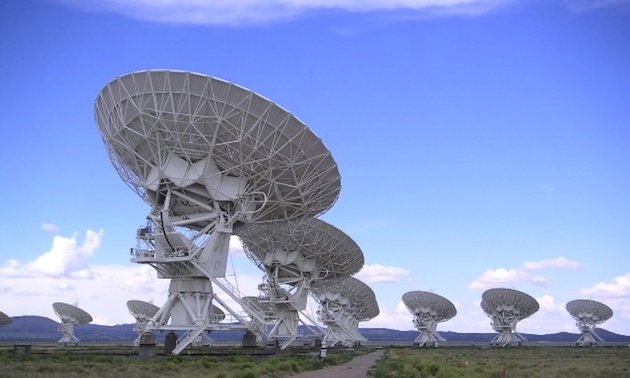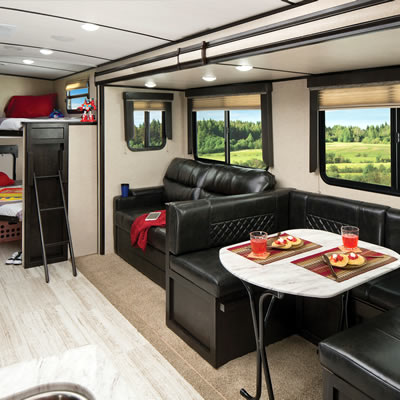Science and discovery in New Mexico
The Bradbury Science Museum is located in downtown Los Alamos

Los Alamos, New Mexico, 35 miles (55 kilometres) northwest of Santa Fe, is best known as the location for the top secret Manhattan Project of the Second World War. Here are some of the best science-related attractions in Los Alamos and around the state of New Mexico.
Los Alamos National Laboratory
Los Alamos National Laboratory (LANL) was founded in 1943 to undertake the Manhattan Project—the development of the atomic bomb. Dr. Robert Oppenheimer served as the science director and Lt. General Leslie R. Groves as director of the entire project. LANL is now one of the largest science and technological institutions in the world, conducting multidisciplinary research into such topics as design of nuclear weapons, national security, space exploration, renewable energy, nanotechnology and supercomputing. The lab has an annual budget of two billion dollars and has 11,000 employees working in 2,100 facilities.
Bradbury Science Museum
Located in downtown Los Alamos is the Bradbury Science Museum, which deals with the history, defense and research of nuclear weapons and energy. Norris Bradbury replaced Oppenheimer as director of LANL. A visit to the museum is highly recommended.
Trinity Site National Historic Landmark
Trinity is where the first atomic bomb, named Gadget, was tested on July 16, 1945, ushering in the Atomic Age. Located approximately 126 miles (203 kilometres) southeast of Albuquerque, Trinity is in the White Sands Missile Range east of Socorro. Trinity is a National Historic Landmark, but because it is located in a military area it is only open to the public once or twice a year. Tours need to be arranged well in advance.
Very Large Array
Approximately 130 miles (209 kilometres) southwest of Albuquerque and west of Socorro is the Very Large Array (VLA), home to the National Radio Astronomy Observatory (NRAO). Founded in 1956, NRAO provides radio telescope facilities for scientists from around the world. Its goal is to use radio waves from 27 radio telescopes to listen deep into space. Some of the research involves black holes, magnetic filaments and complex gas motions in the Milky Way.
If it sounds like science fiction, it was—in the movie called Contact (1997), featuring Jodie Foster and Matthew McConaughey and filmed in part at the VLA. Dr. Ellie Arroway (Foster) is an astronomer who believes that intelligent life exists elsewhere in the universe.
Tours are available.
Nuclear museum
The National Museum of Nuclear Science and History is in Albuquerque. It has full size replicas of the first atomic bombs—Gadget, Little Boy and Fat Man.
What is unique to this museum is the five acre Heritage Park. There are planes, rockets, and even part of a nuclear submarine on display. There is a B-29 Superfortress, Bomarc Cruise Missile, Minuteman Missile, a Titan 11 Missile and many more.
Sandia National Laboratory
New Mexico has a second world-class research facility at the Sandia National Laboratory, located on the Kirtland Air Force Base in Albuquerque. It’s a contractor for the U.S. Department of Energy and the National Nuclear Security Administration and is a subsidiary of Lockheed Martin Corporation. SNL is federally funded and has nearly 10,000 employees. Teams of scientist and engineers design, research and develop nuclear weapons, defense systems, counterterrorism programs, cybersecurity, alternate energy and complex robotics, just to name a few of their functions. Tours are available.






